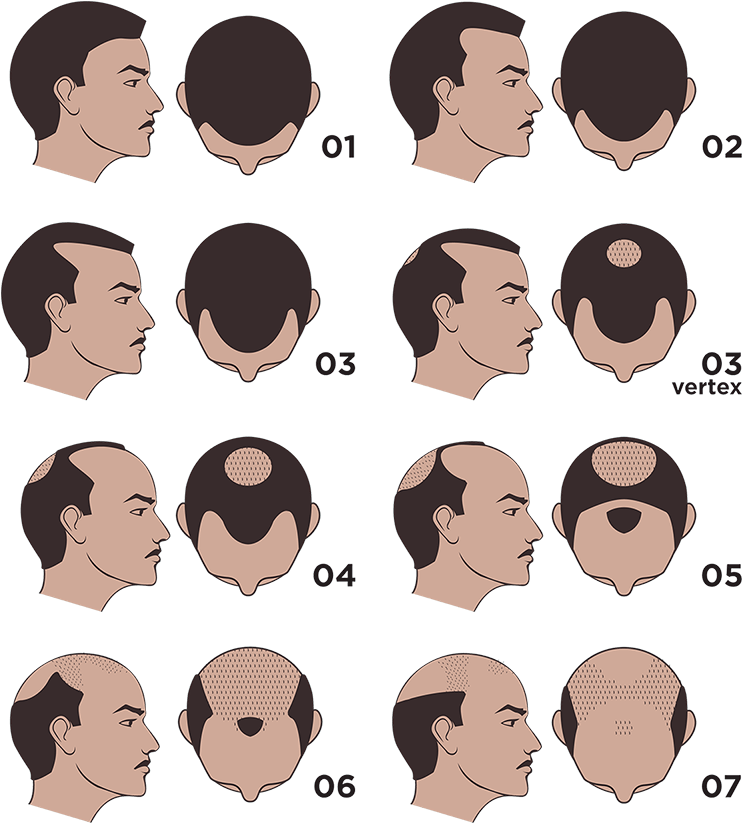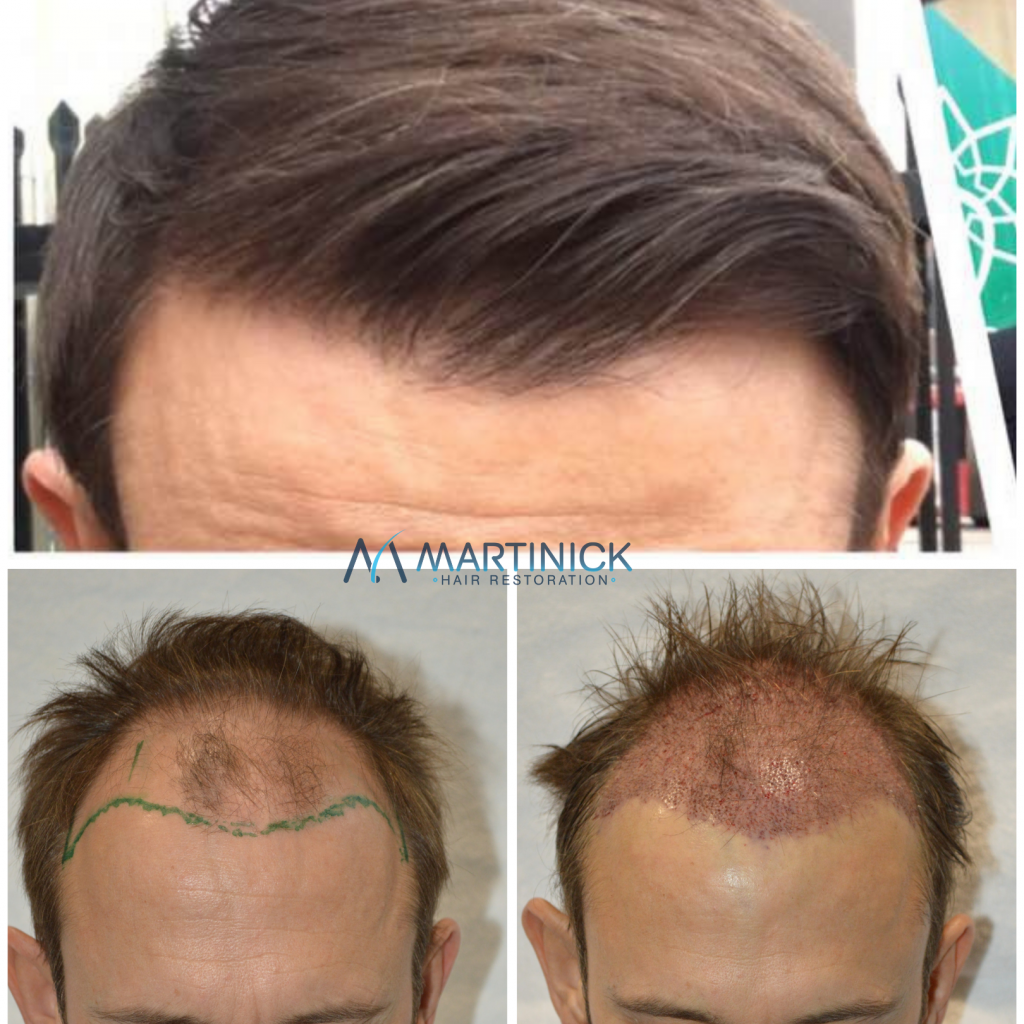Baldness in men occurs when the follicle shrinks over time due to testosterone, the male sex hormone, being converted into DHT by the enzyme 5-alpha reductase.
Symptoms:
- The hairline gradually recedes to form an “M” shape.
- The existing hair may become finer and shorter.
- The hair at the crown also begins to thin.
- Eventually the top of the hairline meets the thinned crown, leaving a horseshoe pattern of hair around the sides of the head.
There are 7 stages to MPB known as the Norwood Chart:







